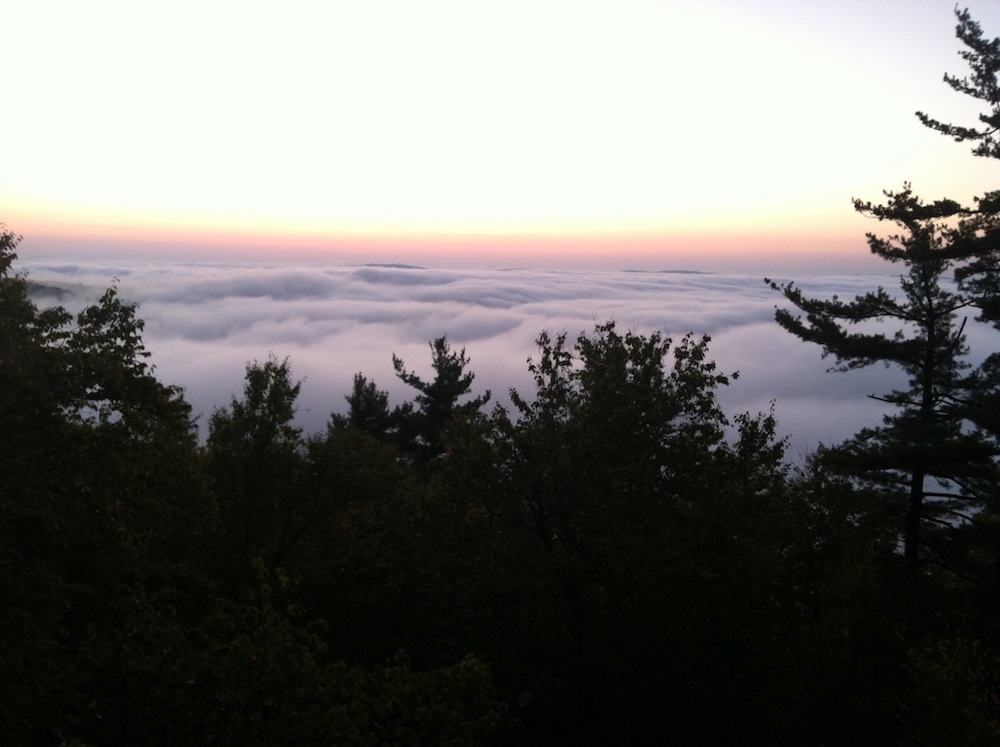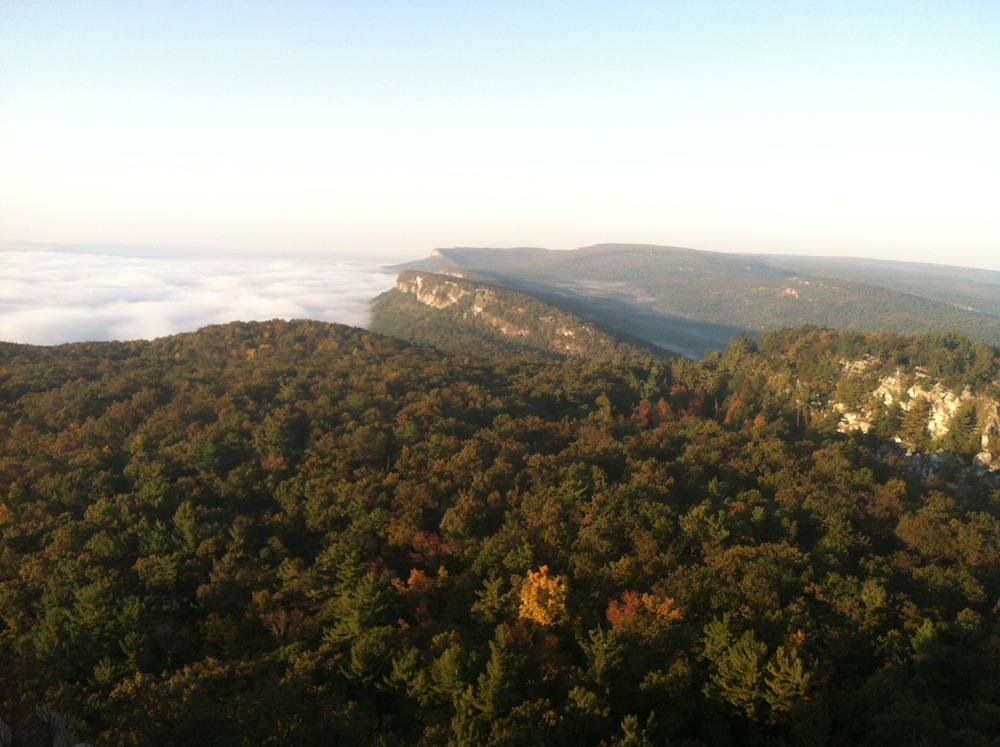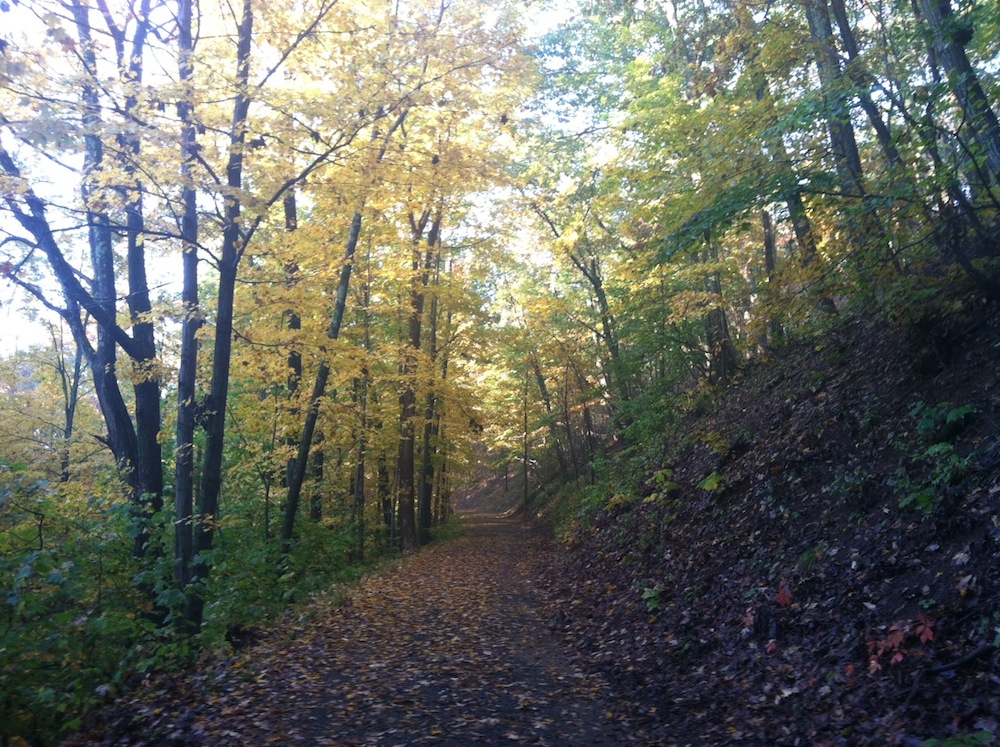 |
| First light over the Hudson Valley, having left the clouds, fog, and mist below |
Seeing the light. It’s a powerful metaphor. You can take it in one of several ways. On the one hand, there’s seeing the light, as in having an epiphany, a revelation, an “aha” moment. You—or your thinking—were once in darkness, but you’re now in the light. It’s akin to that moment—experienced maybe in a doctor’s office, or at home, or reading something on the Internet—when you realize that gluten has been causing your health problems. You are in darkness no longer. You have answers; you have a clear direction before you. Welcome to the light. (The gluten-free light!)
On the other hand, there’s seeing the light at the end of the tunnel, which is similar to simply seeing the light (both transition from metaphorical darkness to light). But it’s also different, because seeing the light at the end of the tunnel also implies a feeling of hope. It’s wrapped up in expectation, and a belief that although things are dark now, you see brighter days ahead in the future. Maybe that’s how you feel if you’ve gone gluten-free, and you’re starting to feel better but you’re not 100% there. Yet. You feel your health returning; it’s coming. You see the light at the end of the tunnel.
 |
| Sunrise from the summit of Skytop, illuminating the cliffs of the Shawangunk Mountains |
I’m in just such a place with my ankle recovery. After the Virgil Crest ultramarathon late last month—and the doctor visits and MRI that followed—I gave my ankle rest. Then my recovery reached a plateau. The pain was better, but not nearly gone, and though I continued to give the ankle more rest, it felt like it was making little, if any, further progress.
I grew impatient. If giving it further rest didn’t seem to be helping the situation, then why was I still resting? Cabin fever and I do not make good friends. I decided to start running again. But rather than jump directly from relative inactivity into a 50-mile ultra on a still-compromised ankle, I decided to return to trail running the smart way.
First, I committed to running within the limits of my ankle. If the pain returned, increased, or I otherwise felt that I was doing damage and prolonging or even regressing my recovery, I’d stop.
Second, I committed to returning to running in three phases:
1. Rebuild distance (increase the mileage as my leg permits)
2. Rebuild elevation (increase the ups and downs as my leg permits)
3. Rebuild technicality (increase the difficulty of the trails, shifting from flat, even footing to uneven roots and rocks, again as my leg permits)
 |
| The road ahead (and back to the trailhead) |
Overall, these strategies are working marvelously. My ankle is not 100% yet, and I suspect it will take a good bit longer to fully get there, but I’ve returned to running while continuing to make slow, steady progress in the recovery. Meanwhile, it feels amazingly good to be running again.
In 10 days I’ve logged about 40+ miles of trail running (compared to just 16.5 miles in the month leading up to Virgil Crest). As planned, I started modestly—with a flat, even, 4.5 miles on a gravel farm road. Next came runs of 6.4 and almost 9 miles. Most recently, I’ve logged runs of just under and just over 10 miles each. Each of those runs has included 2,800 to 3,200 feet of elevation change, and the most recent run also included some semi-technical trails, which I took tentatively but without incident. My legs have plenty more to give—they’re ready to run longer distances—but I’ve purposefully been sticking to my phased recovery strategy to make sure I don’t overdo it with my ankle.
Along the way, I crossed a threshold never before achieved personally: 1,000 miles of trail running in a single season. That’s a good long way to run. And for the most part, they’ve been quality miles spent in some of my favorite landscapes: the Shawangunk Mountains, the Hudson Highlands, the Catskills, the Finger Lakes, the Greenbelt of Long Island.
Looking ahead, there’s one more chapter to write in the story of my 2012 gluten-free ultra-running season. In just under two weeks, I have my last ultra of the season: the Bimbler’s Bluff 50k in Connecticut. I told Kelli I would only run the race if I had near-100% certainty that I would finish, that I wouldn’t be forced to DNF because of the ankle. Long story short: I fully plan to toe the starting line and avenge last year’s DNF.
Thanks again for all your support, and for joining me on the journey of the 2012 ultra season. There are plenty more gluten-free endurance and mountain adventures to come, starting with the approaching winter. I do believe some ski mountaineering racing is in my future. (And what better way to stay in shape for next year’s ultra season?!)
–Pete